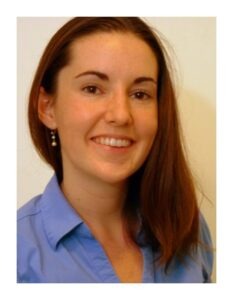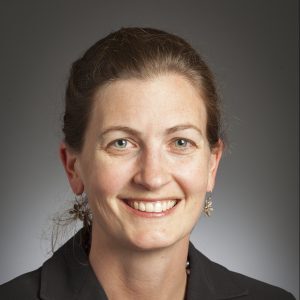This story originally appeared in the Hub.
The Ralph O’Connor Sustainable Energy Institute is launching a four-week summer program for high school students to learn about sustainable energy engineering. Offered through the Whiting School of Engineering’s Engineering Innovation program, the program builds on ROSEI’s efforts to educate future leaders in the field of energy, one of the institute’s core missions.
Described as a crash course in all things related to sustainable energy engineering, the High School Sustainable Energy Education, or SEE, program will offer a curriculum co-developed by Rachel Sangree, a ROSEI-associated researcher and associate teaching professor in the Department of Civil and Systems Engineering, and Claire VerHulst, the assistant director of Engineering Innovation.

Claire VerHulst
“Our goal is to help these students figure out if they want to pursue this area of engineering in college,” VerHulst said. “There are so many aspects of being an engineer, like working on problems that don’t have a single correct solution, or being part of a group that collects and analyzes data. We want to give the students an overview of the landscape and develop the skills of asking good questions and identifying good sources.”
ROSEI has already built into its mission avenues for Johns Hopkins students to learn more about sustainable energy engineering. In addition to the opportunities the institute offers to conduct energy-related research, ROSEI has created a new energy minor for students in the Whiting School of Engineering and Krieger School of Arts & Sciences. The SEE program represents an important foray into educating and recruiting high school students to the field.
The program starts with a few basic lessons: how energy impacts everyone’s daily lives, the sources of energy that are currently used, and the fundamental science and engineering concepts that are critical to working on energy problems. Emphasizing how climate change is driving both policy and business toward more renewable energy sources, students will then learn how energy is harnessed from hydroelectric, wind, solar, and biomass sources, as well as ways to make two of the most energy-intensive systems in society—transportation and buildings—more energy efficient.
The curriculum will include both classroom lectures and hands-on experiments, which will help the students translate the fundamental theories and concepts they learn in the classroom into real-world applications. Over the summer, Sangree and VerHulst worked with Cecilia Doyle, a fourth-year civil and systems engineering student, and Vedant Gabhawala, a third-year mechanical engineering student, to design and test the program’s curriculum to ensure it was neither too easy nor too difficult for high school students. The students provided valuable feedback and ideas.

Rachel Sangree
“The students worked in the lab every day this summer, consistently demonstrating a high level of energy and enthusiasm for the project. Not only did they test the experiments that Claire and I developed, they also designed and tested experiments of their own,” Sangree said. “Having two people who were not as far removed from high school as Claire and I was crucial to not only ensuring that the level of the work was appropriate, but also that the lessons were engaging and met their intended learning objectives.”
The program’s inaugural cohort of roughly 20 students will arrive on the Homewood campus in the summer of 2023. In subsequent summers, the SEE program will be offered virtually and on campuses around the United States during the summer just as other Engineering Innovation programs are.
VerHulst hopes the program sparks participants’ interest in pursuing the study of sustainable energy engineering in college. But even those who do not go on to further studies in the field will likely be impacted by what they learn over the summer.
“Because these students are so young, climate change will greatly impact their lives. We hope this program prepares students to make positive change in the world through engineering and technology,” VerHulst said. “Even if a student decides that engineering isn’t for them, they will leave the program as a more informed citizen who is better able to take action to support sustainable energy and mitigate the devastating effects of climate change.”